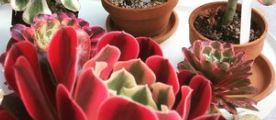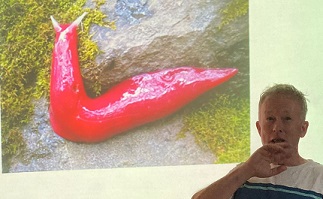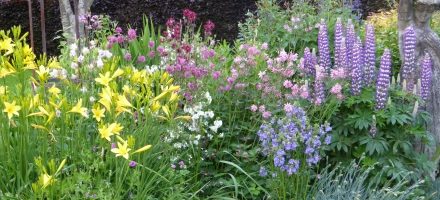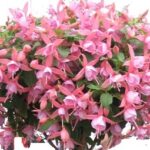Meeting: 27 November 2018
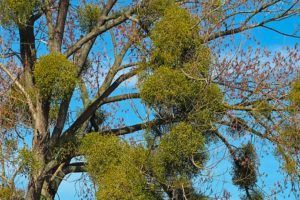
Members attending the November meeting of the Gardening Club were treated to a seasonal feast of information about one of the iconic plants of the Christmas period – MISTLETOE.
Our speaker, Jonathan Briggs, is a world renowned expert on this most interesting plant having spent decades studying every aspect of its life and history. He began by describing “Viscum album” – our only native white berried plant and unique to northern Europe. There are 1300 species of Mistletoe around the world but only few in the northern hemisphere and only this one in Britain.
The characteristics of Viscum album include:
white berries (very viscous when squeezed)
evergreen
hemi-parasitic
shrub
grows on trees – uses its host for water and nutrients.
One interesting feature is its spherical growth pattern – possible because it grows up in the air on its tree host. It has a very precise growth pattern of two leaves each year at the end of the previous year’s growth – leading to a perfect sphere – most noticeable once all the leaves of the host tree have gone.
The main area of growth is the West Midlands due to the ideal climate conditions. It is not due to the vast number of apple trees (it has many tree hosts). It follows river valleys with a liking for lowlands and a dislike of forested areas. Among the many deciduous hosts (after the 40% on apple trees) are lime trees, hawthorn, poplar and black poplar. It does not grow on evergreens.
Our speaker gave us many entertaining examples of stories and legends concerning Mistletoe from the Druids with their golden sickle through to tales of the Norse gods and Greek legends to the more recent Victorian tradition of kissing under the Mistletoe at Christmas.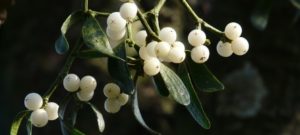
In this area, Mistletoe has traditionally been cut at the end of November and sold at auctions at Tenbury Wells (where the first of the year’s auction was on the day of our meeting). In the 1890’s the demand for Mistletoe was so great that much of it was imported from France!
Unfortunately many old orchards are being lost as modern cider making methods demand lower growing, easier access trees. Those that remain need to be properly cared for so that not too much Mistletoe is allowed to grow on each tree and thus extend its’ life. In future it could be that more Mistletoe comes from other sources e.g. gardens.
Jonathan Briggs explained the life cycle of Mistletoe and how it is pollinated by insects in February and spread by birds who eat the fruit and deposit the seed either through wiping their beaks (blackcaps) on the branches of nearby trees or through their sticky droppings (thrushes and blackbirds) which cover nearby trees. He urged gardeners to help Mistletoe survive by squeezing out the seeds and transferring them to a suitable tree in a sunny position where the new shrub can develop – very slowly!
And much more which you can find out by using the website Mistletoe.org.uk.

